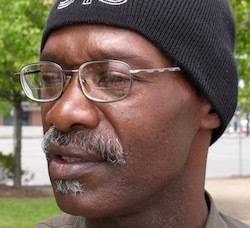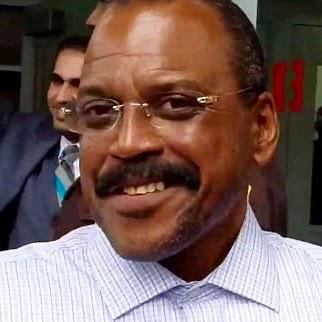Police Violence
Via newspaper and archival research, we documented incidents of police violence in Detroit from 1974-1977. Due to the selective nature of the archive as well as the relationship between the newspapers and the department, our findings are not exhaustive but attempt to locate general trends in the violence and a critique of the response. For more on archival silences and our data collection process, click here.
Reform is insufficient
In order to end state violence against Black people, reform remained an insufficient response. The passive response to white civilians killing and brutalizing Black civilians is included in the term "state violence" because the administration's passivity continued to serve as institutionalized, violent permission. Mayor Young, following the progressive strategy, believed that increased civilian involvement, including increased community policing efforts and the implementation of civilian review boards for complaint proceedings, would result in increased officer accountability and in turn, justice. However, community policing resulted in more widespread criminalization of Black, Latinx, and poor populations. Moreover, the legitimacy of the accountability that civilian review boards could uphold was under question by abolitionists. The ideological component of the carceral system was not being interrogated. Dr. Angela Y Davis, Mariame Kaba, and Ruth Gilmore Wilson are among the most prominent career abolitionists that argue for a complete ideological shift in how we view punishment and criminality in order to truly see justice and Black liberation. Following their argument, a civilian review board is full of civilians that have grown up under carceral acculturation, conditioned to view punishment as justice. Removing and punishing a few of the officers that perpetuate the most egregious harm is insufficient in addressing the systemic violence of policing. It is not true justice to continue to uphold and fund a system that will continue to brutalize Black people. The abolitionist invitation is to defund police and prisons as a step towards abolition, with abolition including reinvestment in community uplift programs and reworking how the community addresses harm, without police. The ideology is mentioned here in order to highlight that abolitionist perspectives have long existed, and while liberal policies may have had just intentions, they remain either ineffective or harmful solutions.
Below are maps and statistics to illustrate police violence against Black people in Detroit from 1974-1977 with the most data from 1974 and 1975. Below the maps, there is a brief description of the most prevalent trends and the limitations to our data collection.
1974-1977: All Incidents (Race)
1974: Police Misconduct and Precincts by Income
Rough Statistics*:
Homicide: 22%
Nonfatal Shooting of Civilian 10%
Police Brutality: 37%
- Physical Assault 61%
Misconduct 31%
- Verbal Harassment 35%
- Wrongful Arrest: 24%
- Intimidation/Threat: 16%
- Selective Enforcement (Discriminatory): 25%
*According to the police report for 1974, there should be 22 homicides and we only found 9. The data is only a representation of what we were able to uncover via newspaper reports, civil suits, and complaints.
As illustrated in the statistics above, police brutality was the most prevalent occurrence, albeit by a small margin, followed by police misconduct, homicides, and nonfatal shooting of civilians respectively. As far as the patterns we noticed across the homicides, the most prevalent involved an officer’s attempt to create a narrative of self-defense. The officers were aware that a self-defense claim would result in reduced punishment, especially if it could be substantiated with the presence of a weapon. One of the most common claims involved a nonspecific, common object like a knife or razor, that could easily be planted on the victim. The tactic was later referred to as a “dropsy case (link).” Homicides were most frequently committed by off duty or plainclothes officers, therefore they were not easily identifiable as police.
Regarding nonfatal violence, the most popular weapon was the flashlight, which often sent the victim to the hospital with cranial damage or other injuries that would prevent an immediate return to work. The flashlight was the weapon of choice for repeat offenders like Lindsay Joker (link). This law was later adjusted, and the metal flashlights were swapped with a lighter model (link to team 5). We found that officers especially targeted the previously incarcerated African Americans and African American bar owners. The harassment was scheduled, either nightly or weekly and took both verbal and physical form. For example, the unnamed African American bar owner of Chorty’s was harassed every night because the officers preferred the competing car across the street. The drunk officers thought they could run Chorty’s out of business with consistent harassment.
Officers also targeted young African American schoolchildren, isolating and then physically assaulting them on their way to or from school. Mark Strickland’s mother sent in a complaint to Ravitz, a member of the Board of Police Commissioners. According to her account and the subsequent investigation, on March 25, 1974, Mark was picked up by a scout car while he was waiting to walk his five-year-old niece home. The officers drove him a few blocks away and swore at him, choked him and hit him in the face before releasing him. He was allegedly threatened and told never to return to school. His friends corroborated the story, saying that while they did see Mark get into the scout car, they did not see the actual abuse. Mark was treated for superficial injuries at Ford Hospital but the department was not given access to the records. Further, Mrs. Strickland did not allow the officers to interview her son. The investigation allegedly continued after the complaint but it is not clear if any action was taken against the officers in question. They belonged to the 13th precinct but were unnamed in the report. This is unfortunately not an isolated incident. Schoolchildren were far too often victims of police brutality and harassment.
There were many complaints involving both selective enforcement and wrongful arrests, especially involving a minor traffic violation (link). Officers would routinely pull over citizens and proceed to ticket African Americans at a perceived far higher rate than their white neighbors. Furthermore, the arrest was justified if the citizen lacked license or registration and there were reports of officers either refusing to accept their documentation or destroying it in front of the citizen in order to proceed with the arrest and collect bail. One case, Delano Kaigler was stopped in mid-February of 1974 and the officer requested his registration and the officer proceeded to tear it up in front of Kaigler’s face and the officer also confiscated Kaigler’s property.
Armed police had a tendency to break into civilian homes without warrants, and proceed to harass and assault the residents. Often their justification was either a complaint or report that an individual involved in an open case lives there. These break-ins are typically reported to occur in the middle of the night, inciting terror in the residents. There was one case, without any names, where a white landlord reported his African American tenant for owning a gun. According to her complaint, officers proceeded to break into her home with machine guns, terrifying her. She presented the officers with her permit to legally own the gun, and no further action was taken. In another incident, Mrs. King filed a complaint when her neighbor’s home was broken into by officers with their guns drawn on May 2, 1974. Her son Steve Slimms was arrested twice after the date of the complaint. He was arrested once for an armed robbery and once for assault with the intent to murder. The initial arrest was at the same home as the complaint. According to the complaint file, Mrs. King was satisfied once the officers admitted that they should not have had their guns drawn and will not do this to her again.
It should be noted that out of over **** complaints, we have processed roughly 150 at this time. Out of the ****, only 11 provoked a civil suit.
Wrongful Convictions and Exonerations
Wrongful convictions are not commonly thought of as violence. Yet it is hard to come up with a better word to describe the processes of forcefully taking an innocent person away from their life and loved ones, putting them into a confined space, and stripping them of nearly every conceivable right and freedom. Moreover, carceral spaces such as jails and prisons are notorious for their high rates of physical, emotional, and sexual abuse. The stories of exonerated individuals are thus an important part of the broader patterns of police violence and carceral violence that this digital exhibit seeks to document.
Although comprehensive data on wrongful convictions is nearly impossible to obtain, the National Registry of Exonerations has made an effort to document as many cases as possible of wrongfully convicted individuals who have since been legally exonerated. This data, despite being incomplete, can provide a glimpse into patterns of wrongful convictions in Detroit. There are two known cases of individuals wrongfully convicted between 1974 and 1977 who have since been legally exonerated. Those cases are detailed below:
Edward Carter (Black, Male, 19 at time of conviction) was wrongfully convicted for a rape and robbery on the campus of Wayne State University that occurred in 1974. Carter was misidentified by a victim after being placed in a police lineup with a group that did not resemble him or the suspect. His defense lawyer was inexperienced and did not request an analysis of fingerprints at the scene. Carter's defense attorney also failed to note that semen recovered from the crime did not match Carter's blood type and that Carter was actually in police custody on the day of the crime. In the mid-2000s testing revealed that the fingerprints from the crime scene matched those of another man who by then was incarcerated for similar crimes in the Wayne State area that had been committed around the time that Carter was convicted. Carter's conviction was vacated in 2010. In 2017 he was granted relief of $1.7 million for his 35 years spent in prison.
Ledura Watkins (Black, Male, 20 at time of conviction) was wrongfully convicted of first-degree murder for the killing of Evette Ingram, who was fatally shot in her home in 1975. Watkins was charged based on testimony from a man named Travis Herndon who claimed that he and Watkins had robbed Ingram at the direction of a corrupt Highland Park police officer named Gary Vazana. Herndon was given immunity in crimes related to the murder in exchange for his testimony and was given additional favorable treatment by the police officers and the prosecutor, which was not disclosed at the time of the trial. Additionally, Detroit Police Sgt. Neil Schwartz testified during the trial that he knew Herndon was trustworthy because Herndon had agreed to take a polygraph, but did not disclose that the polygraph had come back inconclusive. In 1981 Herndon rescinded his testimony and stated under oath that Watkins' was not involved in the crime. Yet Watkins' conviction wasn't vacated for another 36 years. Watkins was finally freed in 2017 based on new evidence that showed a gap in the chain of custody for a hair which had been used to connect him to crime as well as new evidence standards from the FBI that discredited the forensic method used to to link Watkins to the hair in the first place. In total Watkins served 41 years in prison for a murder he did not commit.


